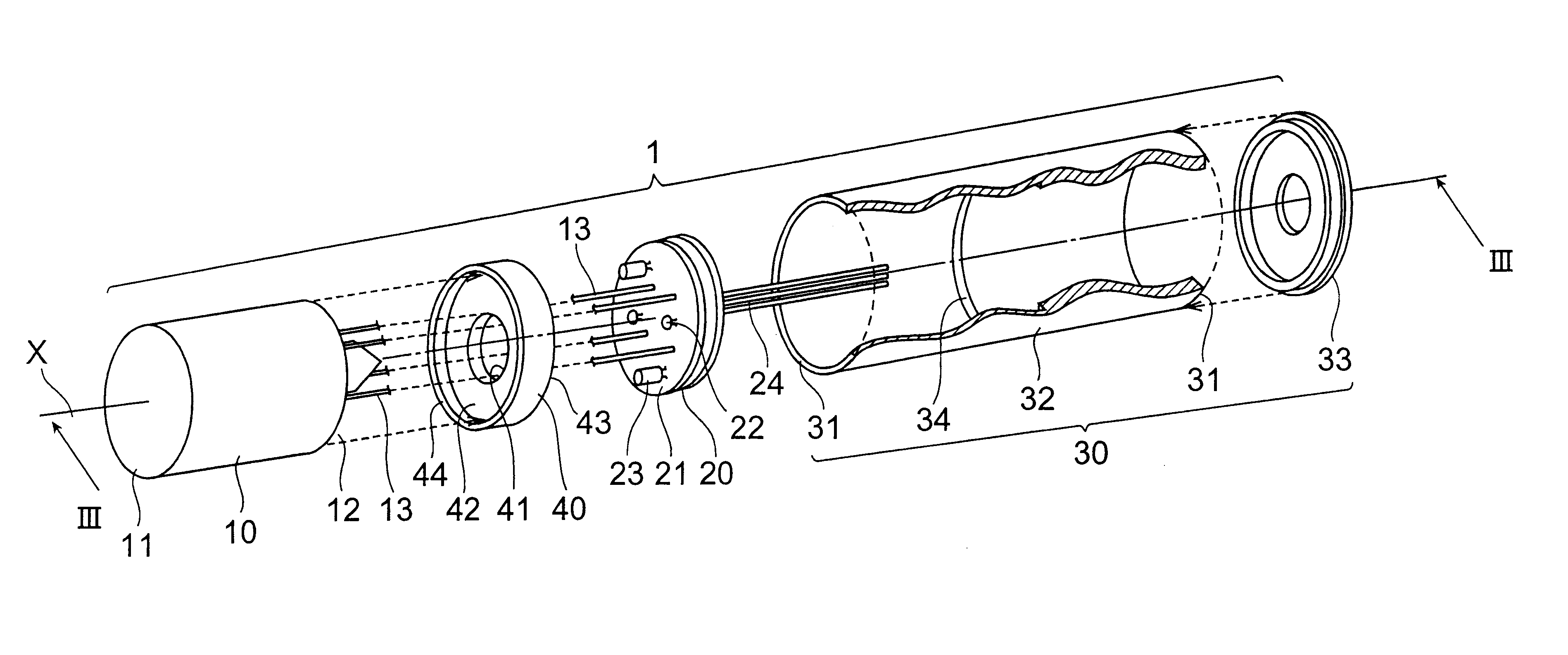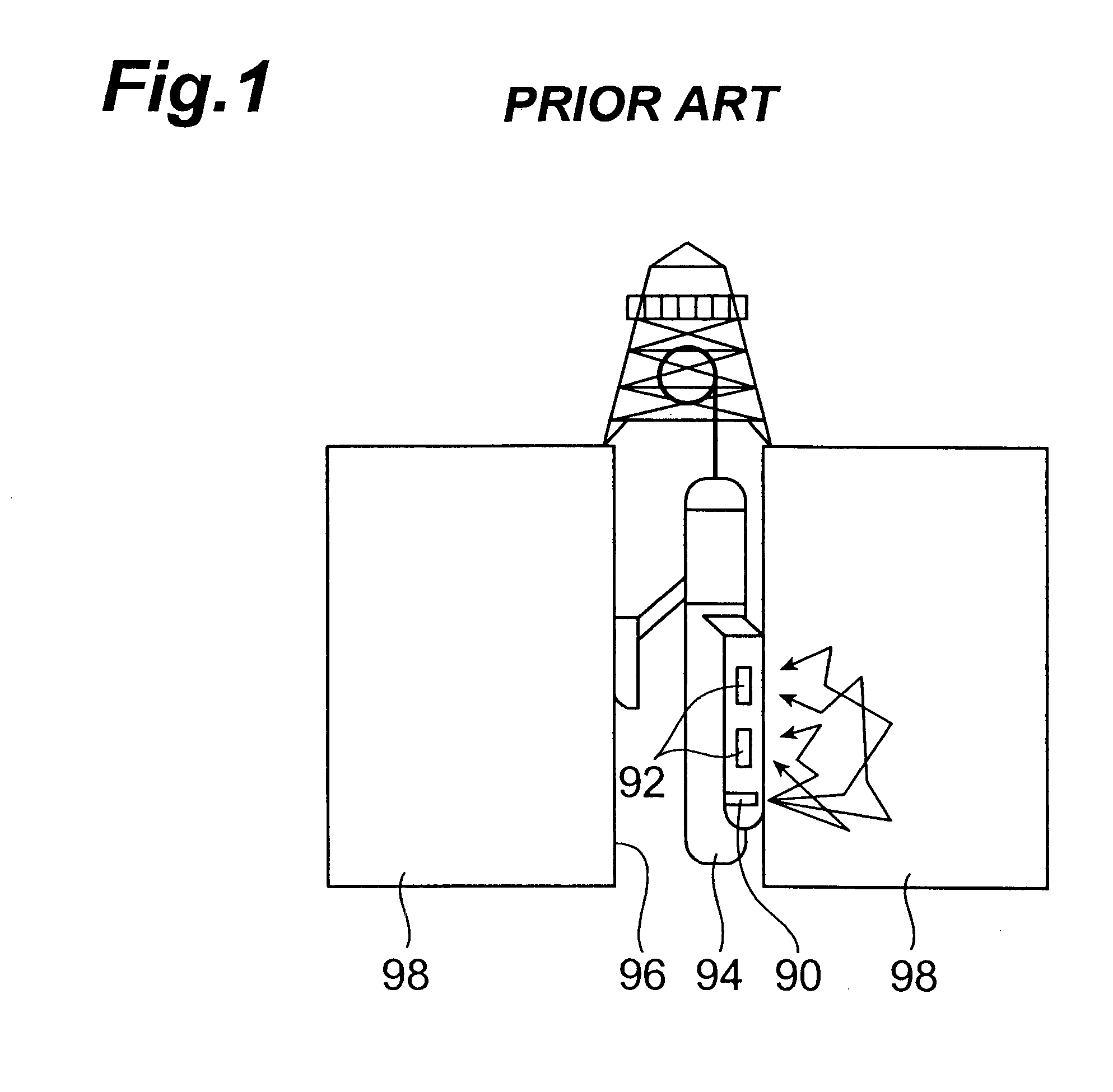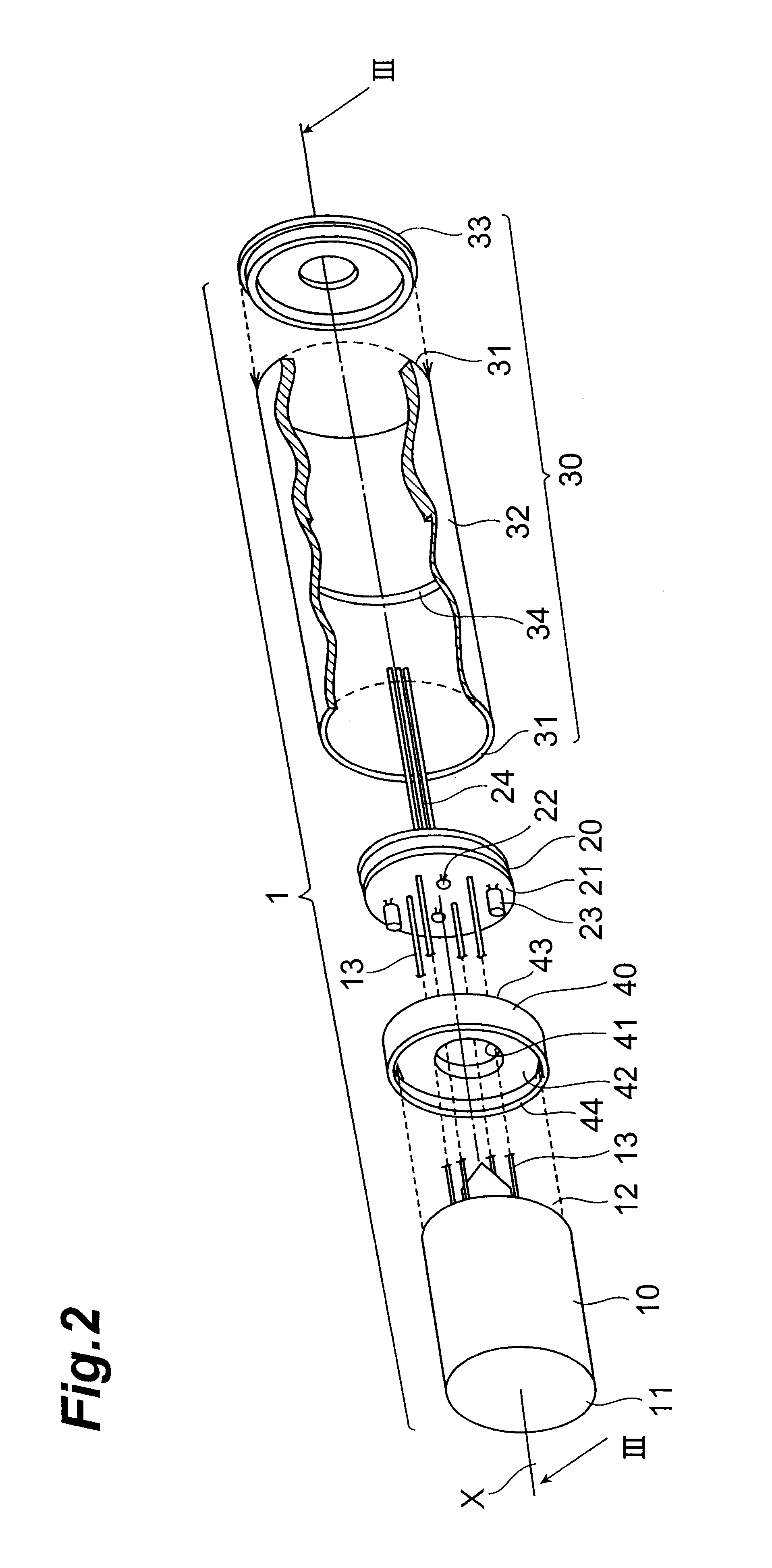Light receiving module and radiation detecting apparatus equipped with the same
a radiation detection and light receiving technology, applied in the direction of navigation instruments, instruments for comonautical navigation, instruments, etc., can solve the problem of radiation detection accuracy affecting the operation of the same, and achieve the effect of reducing the accuracy of radiation detection
- Summary
- Abstract
- Description
- Claims
- Application Information
AI Technical Summary
Benefits of technology
Problems solved by technology
Method used
Image
Examples
first embodiment
FIG. 2 is a view of an assembly step showing the light-receiving module according to the present invention. FIG. 3A is a cross sectional view of the light-receiving module taken along the line III--III in FIG. 2.
In FIGS. 2 and 3A, the light-receiving module 1 comprises a photomultiplier 10, a bleeder circuit board 20, a module case 30, and a stopper 40 which all are aligned along the center axis X of the module case 30.
The photomultiplier 10 is of so-called a head-on type having a faceplate 11 for receiving light and a stem 12 opposing each other. The photomultiplier 10 is contemplated particularly in its photoelectric surface, dynode, and electrode structure (these three are not shown) for providing its performance when operated under high-temperature, vibrating conditions.
The bleeder circuit board 20 supplies dynodes in the photomultiplier 10, not shown, with a voltage having a potential gradient. The bleeder circuit board 20 has resistors 22 and capacitors 23 connected on a disk-...
second embodiment
FIG. 11 is a cross sectional view showing a structure of a radiation detecting apparatus 50 equipped with the light-receiving module 1 of the
As shown, while the photomultiplier 10 of the light-receiving module 1 has its faceplate 11 and stem 12 arranged not in parallel, the stem 12 and the contact surface 42 of the stopper 40 are controlled to align the faceplate 11 in parallel with the opening 31 of the module case 30 and simultaneously the stem 12 is seated at its rim portion directly on the contact surface 42 of the stopper 40.
As a result, the force applied by the spring 53 is distributed evenly onto the entire surface of the faceplate 11, hence ensuring a higher level of the coupling between the light-receiving module 1 and the scintillator 52. Also, the stem 12 is prevented from locally receiving a convergence of stress, thus minimizing the damage to the photomultiplier 10.
While the light-receiving module 1 of the second embodiment provides the same effect as of the first embod...
PUM
 Login to View More
Login to View More Abstract
Description
Claims
Application Information
 Login to View More
Login to View More - R&D
- Intellectual Property
- Life Sciences
- Materials
- Tech Scout
- Unparalleled Data Quality
- Higher Quality Content
- 60% Fewer Hallucinations
Browse by: Latest US Patents, China's latest patents, Technical Efficacy Thesaurus, Application Domain, Technology Topic, Popular Technical Reports.
© 2025 PatSnap. All rights reserved.Legal|Privacy policy|Modern Slavery Act Transparency Statement|Sitemap|About US| Contact US: help@patsnap.com



